The Ford Everest tops the SUV tree for the company's Australian outfit, with the Ranger ute-based four-wheel drive (4WD) wagon designed in Melbourne and built in Thailand.
The Titanium, meanwhile, represents the ultimate execution of the Everest, and offers three rows of top-shelf appointments supplemented by plenty of driver aids and a load of real world practicality.
The price of entry to the Everest was markedly higher than similar 4WD wagon competitors in the space, though, and it's recently undergone what Ford would like to call 'price corrections' to broaden its appeal.
Has the RRP realignment worked?
Ford Everest 2017: Titanium (4WD)
| Engine Type | Diesel Turbo 5, 3.2L |
|---|---|
| Fuel Type | Diesel |
| Fuel Efficiency | 8.5L/100km (combined) |
| Seating | 7 |
| Price From | $33,330 - $39,710 |
| Safety Rating |
|
Is there anything interesting about its design?
7 / 10
If you like your wagons big, square and bluff, then you're going to love the Everest. Fussy lines and ornate trims are definitely not part of its brief.
The front end has been given a thorough makeover when compared to the donor Ranger, and it comes across as being very 'American' in its boldness, with a huge chrome grille dominating the view.
Large running boards and 20-inch alloys help to reinforce the bigger-is-better mantra, while a thick chrome strip across the tailgate ties it all together.
There's simplicity and honesty in its lines, though, and the Everest is a handsome, if basic, large wagon that doesn't look out of place in the city.
The interior steps things up quite a few notches over the donor Ranger, too. There is a different instrument array and more stylish and car-like trim pieces, including a new dash pad with a soft top, as well as a padded centre bin console cover and armrests.
The instrument binnacle features a central speedometer, with a digital rev counter an option on a small right-side digital screen. There's a digital screen on the left that displays options like entertainment and multimedia.
How practical is the space inside?
7 / 10
While the Everest offers a load of features, in some instances they aren't as well thought out as they could be.
Take the bottle holders in all four doors, for example. While they can hold containers bigger than 1.25 litres in size, the oversized dimensions of the door pockets means all but the most perfectly shaped items will rattle around.
.jpg)
And getting in and out of the Everest is actually a bit of a challenge for smaller or less nimble folk, the wide sideboards making the ascent tricky.
On the whole, though, the Everest is a good companion for an active family. The third row of seats is difficult to access for larger people, but will take smaller bodies without much fuss.
The seats themselves are electrically operated via switches in the cargo area in the Titanium. One note, though, when dropping the second row of seats to make a larger cargo area, the belts can be easily caught behind the seat backs.
Second row passengers also have access to a 230 v inverter power point, a 12 v socket and climate controls.
ISOFIX child restraint anchor points are located either side of the second row seats, and there are two cupholders up front and two in the rear, the latter sliding out from the end of the centre armrest.
This design may save space, but the articulated holders that pop out of the end of the armrest are flimsier than having them moulded into the rest itself.
.jpg)
Second row passengers also have access to a 230 v inverter power point, a 12 v socket and climate controls, while vents for the second and third rows are mounted in the roof.
A full sized spare wheel hangs under the rear of the car.
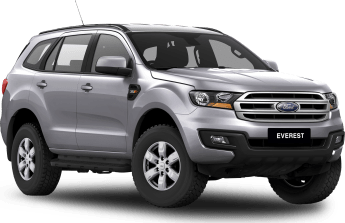
Does it represent good value for the price? What features does it come with?
7 / 10
The seven-seat Titanium starts at $74,990, which is a drop of about $1700 from where it started at launch.
.jpg)
As the top-rung Everest in the fleet, it wants for very little. Standard kit includes leather-accented trim, leather-covered steering wheel, automatic climate control, active high beam control, Ford's new 'Sync3' multimedia touchscreen system with satellite navigation, Bluetooth streaming, Apple CarPlay and Android Auto, head-up display, powered and heated front seats, power tailgate, electrically operated third row seats, rain-sensing wipers, automatic headlights and a sunroof.
The Titanium also comes with forward AEB, adaptive cruise control, driver awareness alert and lane departure warning, along with park assist, rear view camera and front and rear sensors.
If you cross-shop the Everest against other ute-based 4WD wagons, the Everest is by far and away the most expensive
Throw in LED daytime running lights and xenon headlights, along with those 20-inch rims and side steps, and the Titanium is pretty well specified.
If you cross-shop the Everest against other ute-based 4WD wagons like the Mitsubishi Pajero Sport, Toyota Fortuner and Isuzu MU-X, the Everest is by far and away the most expensive, though Ford insists it competes with large SUVs like the Toyota Prado, which sells for $75,190 in VX trim.
What are the key stats for the engine and transmission?
7 / 10
The Everest range features just one engine, Ford's 3.2-litre, five-cylinder turbo-diesel engine, as used in the Ranger. Different emissions gear means that while it retains the same torque figure of 470Nm, it drops 4kW over the Ranger to 143kW.
.jpg)
The Titanium uses a six-speed automatic transmission and a full-time 4WD system that sends torque to each axle as needed. A multi-mode terrain dial can tweak the centre diff settings to suit sand, snow, dirt or rock driving, while the Everest also gets a low range box and an electronically lockable rear diff.
How much fuel does it consume?
7 / 10
Over a measured distance of 502km, we used 68.2 litres of diesel, resulting in a combined fuel economy figure of 13.5L/100km. This included 350km of towing.
It compares to a claimed combined fuel economy figure of 8.5L/100km. With an 80 litre tank, this gives the Everest a theoretical range of over 940km.
What's it like to drive?
7 / 10
Over 600 kilometres of driving revealed a wagon with a lovely, compliant ride quality that helped make that journey a lot more comfortable, thanks to a coil-sprung rear end that replaces the Ranger's leaf springs.
Its steering is surprisingly light, and it does require a bit of time to get used to its sensitivity just off-centre.
.jpg)
NVH (noise, vibration and harshness) getting back into the cabin is well controlled, thanks in part to the mostly road-oriented tyres fitted to the Titanium spec.
This, of course, has a knock-on effect if you do want to take your Everest off road - which you can quite easily thanks to the myriad of options in the off-road drive mode selection program.
You can engage 4WD low, regular 4WD, or just straight 2WD, along with sand, snow, and rock modes that accompany the standard setting, via a dial and a row of switches on the transmission tunnel, although the 225mm of ground clearance is compromised a bit by the broad side steps fitted as standard.
The six-speed auto is a good match for the five-cylinder engine, which is reasonably quiet in operation at cruise speeds. When you're asking it to wake up from a set of traffic lights, however, it can be quite raucous.
There are plenty of driver aids aboard the Everest Titanium, and they're actually pretty well integrated into the car. For example, lane departure assist is not too intrusive, and the adaptive cruise control works brilliantly out on the open road and around town, with a well graduated slowing function and good spacing to the car ahead.
We towed a 1700kg trailer for about 350 kilometres of our test, and apart from having to add our own electric brake controller, the Everest towed extremely well, even with its softer rear end, and was a doddle to hook up, thanks to dynamic lines on the rear view camera.
The Everest did sag a little when the trailer was mounted, but it certainly wasn't outside the realms of regular and legal operation. The copious torque from the turbo-diesel meant climbing hills wasn't a drama, even with a larger load on board. The lane departure system is disabled when a trailer plug is detected, and the Everest comes with trailer sway control as standard.
Of course, fuel economy suffered, but not overly so, increasing at the rate of about 2.0L/100km.
Ford rates the Everest as being able to tow 3000kg of braked trailer, but just 750kg if no brakes are fitted.
Payload is rated at 606kg, the least of all Everest models.
Warranty & Safety Rating
What safety equipment is fitted? What safety rating?
8 / 10
The Everest Titanium features seven airbags including full-length curtain bags, AEB, lane keeping assistance, a rear view camera and front/rear sensors, adaptive cruise control, trailer sway control and a front collision warning system all contribute to a five-from-five ANCAP safety rating for the Everest Trend.
The Titanium also comes with blind spot detection as standard.
What does it cost to own? What warranty is offered?
7 / 10
The Everest is covered a three-year/100,000km warranty, while servicing is recommended every 15,000km or 12 months.
The price of the first service is capped at $390, the second at $520, and the third is $480. It then rises to $520, before falling back to $390 for the five-year service.
Verdict
The top-shelf Titanium is a big, quiet and comfortable wagon for the larger, more adventurous family, and it's very well equipped to boot. Ultimately, though – and Ford really hates me saying this – it's still expensive for a wagon-bodied derivative of a commercial ute, despite the recent price cuts.
There's very little that's not included on the spec list, though, and it can tow and go off-road when required, so that improves the value equation a bit.
Does the Everest Titanium 4WD wagon add up for you? Tell us what you think in the comments below.
Pricing Guides

.jpg)
.jpg)
.jpg)
.jpg)

.jpg)
.jpg)
.jpg)
.jpg)
.jpg)
.jpg)
.jpg)
.jpg)
.jpg)
.jpg)
.jpg)
.jpg)
.jpg)
.jpg)

.jpg)

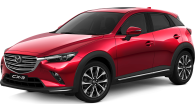






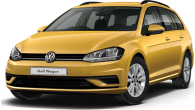












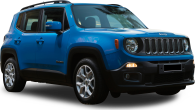













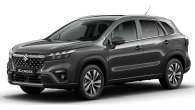
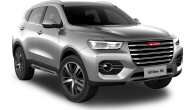

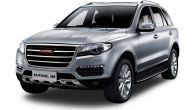



 copy.png)

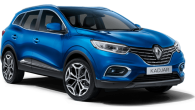
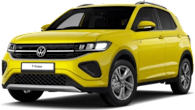



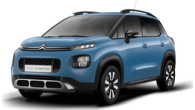







.jpg)



.jpg)
